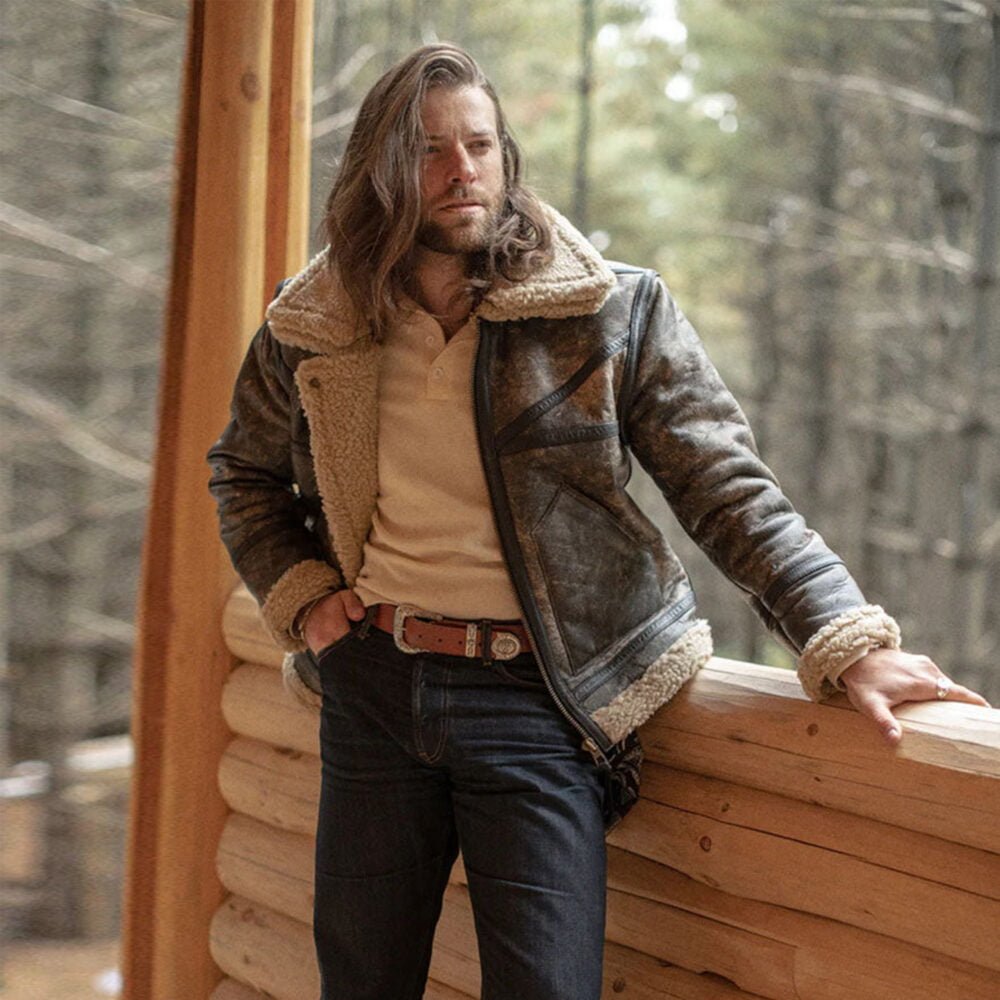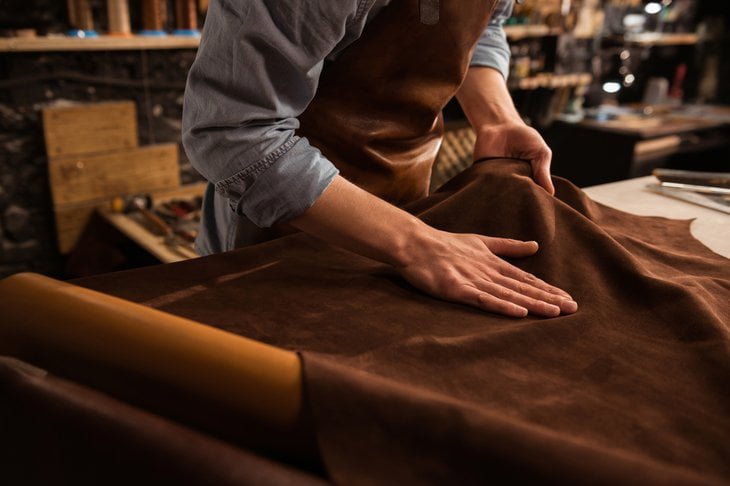What is Shearling Made Out Of?
Introduction to Shearling
Shearling is a unique and luxurious material that is highly sought after in both the fashion and home decor industries. Defined simply, shearling is the hide of a sheep or lamb that has been tanned with the wool still attached. This process results in a material that is both incredibly soft and remarkably durable, making it a favorite choice for a variety of applications.
The appeal of shearling lies in its distinctive characteristics. The wool side of the shearling provides natural insulation, keeping the wearer warm in cold weather, while the leather side offers a stylish and rugged exterior. This combination of comfort and functionality has made shearling a popular material for jackets, coats, boots, and other winter apparel. Additionally, its plush texture and sophisticated appearance have led to its use in home decor items such as rugs, throws, and upholstery.
The origin of shearling can be traced back to the agricultural practices where sheep are raised for both their wool and meat. After the wool is sheared, the hides are carefully processed to preserve the wool fibers, resulting in the luxurious material known as shearling. This dual-purpose use of sheep ensures that shearling is a sustainable and resource-efficient material.
In the world of fashion, shearling has gained a reputation for its timeless elegance and unparalleled comfort. Designers often incorporate shearling into their collections to create pieces that are both stylish and practical. Similarly, in home decor, shearling items add a touch of warmth and luxury to any space, making them a popular choice for those looking to enhance their living environments.
Whether used in clothing or home decor, shearling’s unique blend of softness, warmth, and durability continues to make it a highly valued material. Its versatility and enduring appeal ensure that shearling remains a staple in both industries, beloved for its inherent qualities and luxurious feel.

The Origin of Shearling
Shearling, a material cherished for its warmth and durability, has roots that trace back to ancient civilizations. Originating from the early pastoral communities, shearling was initially utilized by cultures in regions with harsh climates, such as the Mongolian steppes and the Scandinavian territories. These societies, reliant on livestock for their sustenance and survival, developed the technique of creating shearling by preserving the pelts of young sheep with the wool still intact. This innovative practice not only provided essential warmth but also offered a versatile material for various applications.
In Mongolia, shearling was integral to the nomadic lifestyle, where the extreme cold demanded robust clothing. Traditional Mongolian garments, such as the ‘deel’, often incorporated shearling for insulation. Similarly, Scandinavian cultures, facing long, frigid winters, crafted shearling garments to endure the elements. The Vikings, for instance, used shearling to line their cloaks and boots, ensuring protection against the biting northern winds.
Beyond its practical uses, shearling held cultural significance in these societies. In many regions, shearling was a symbol of resourcefulness and adaptability, reflecting the ingenuity required to thrive in challenging environments. The material’s enduring appeal also made it a valuable trade commodity, with shearling being exchanged along ancient trade routes, spreading its use to other parts of the world.

As time progressed, shearling’s appeal transcended its utilitarian roots. It became a staple in various traditional costumes and ceremonial attire, symbolizing both heritage and craftsmanship. The unique properties of shearling—combining warmth, comfort, and durability—ensured its continued relevance through the ages, influencing fashion and utility across different cultures and epochs.
Today, the legacy of shearling remains evident in contemporary fashion and design. Its origins, deeply embedded in the history of human ingenuity and adaptation, remind us of the enduring bond between necessity and creativity.

The Process of Making Shearling
The creation of shearling begins with the careful selection of sheep hides. These hides are sourced primarily from sheep breeds known for their dense, soft wool. Once the hides are selected, they undergo a rigorous treatment process to transform them into the luxurious shearling material.
The first step in the process is curing, where the raw sheep hides are salted to prevent decomposition. This preservation step ensures the hides remain intact until they are ready for further processing. Following curing, the hides undergo a thorough washing to remove any residual dirt, salt, and impurities.
Next, the hides are subjected to a tanning process. Tanning is crucial as it stabilizes the hides, making them resistant to decay and giving them the desired flexibility. There are various methods of tanning, but the most common one used for shearling is chrome tanning. This method involves treating the hides with chromium salts, which impart a high degree of softness and durability to the material.
After tanning, the hides are thoroughly cleaned and then subjected to a process called “fleshing.” Fleshing involves removing any remaining fat and tissue from the skin side of the hide, ensuring a smooth and uniform texture. Following fleshing, the hides are stretched and dried to prepare them for the next stage.
During the final stages, the wool side of the hide is meticulously combed and sheared to achieve the desired length and density. This step is essential to ensure the shearling maintains its characteristic plush texture. The skins are then dyed and finished, which may involve additional treatments to enhance the softness, water resistance, and overall appearance of the material.
Upon completing these steps, the shearling is inspected for quality. Only the hides that meet stringent standards for softness, durability, and uniformity are selected for use in creating shearling garments and accessories. This meticulous process ensures that the final shearling product is both luxurious and resilient, embodying the best qualities of the natural materials from which it is made.
Types of Shearling
Shearling is a versatile material that varies significantly based on several factors, including the breed of sheep, the region where it is produced, and the specific processing techniques employed. These differences influence the texture, appearance, and overall quality of the shearling, making each type unique in its characteristics and applications.
One of the primary distinctions in shearling is the breed of sheep from which it is derived. Certain breeds are known for producing superior shearling due to their specific wool and skin properties. For instance, Merino sheep are renowned for their exceptionally soft and fine wool, resulting in shearling that is plush and gentle to the touch. In contrast, breeds like the Suffolk or Texel produce coarser wool, leading to shearling with a denser texture, which might be preferred for more robust applications.
The region of production also plays a crucial role in determining the quality of shearling. Shearling from countries with a long tradition of sheep farming, such as the United Kingdom, Australia, and New Zealand, often boasts higher standards. The climate and grazing conditions in these regions contribute to the health and quality of the sheep, thereby impacting the shearling produced. For example, shearling from Icelandic sheep, raised in the harsh and cold climate of Iceland, is known for its warmth and durability.
The processing techniques used to transform raw sheepskin into shearling are another critical factor. Traditional methods involve careful tanning and dressing processes that preserve the natural characteristics of the wool and skin. Modern techniques might include additional treatments to enhance softness, color, or durability. The choice of processing method affects not only the tactile qualities of the shearling but also its appearance and longevity. For example, shearling that undergoes minimal processing retains a more natural look and feel, while heavily processed shearling may exhibit a more uniform texture and color.
Overall, the various types of shearling available on the market cater to different preferences and needs. Whether one seeks the luxurious softness of Merino shearling, the rugged durability of Icelandic shearling, or the unique qualities imparted by specific processing techniques, understanding these distinctions allows for more informed choices in selecting shearling products.

